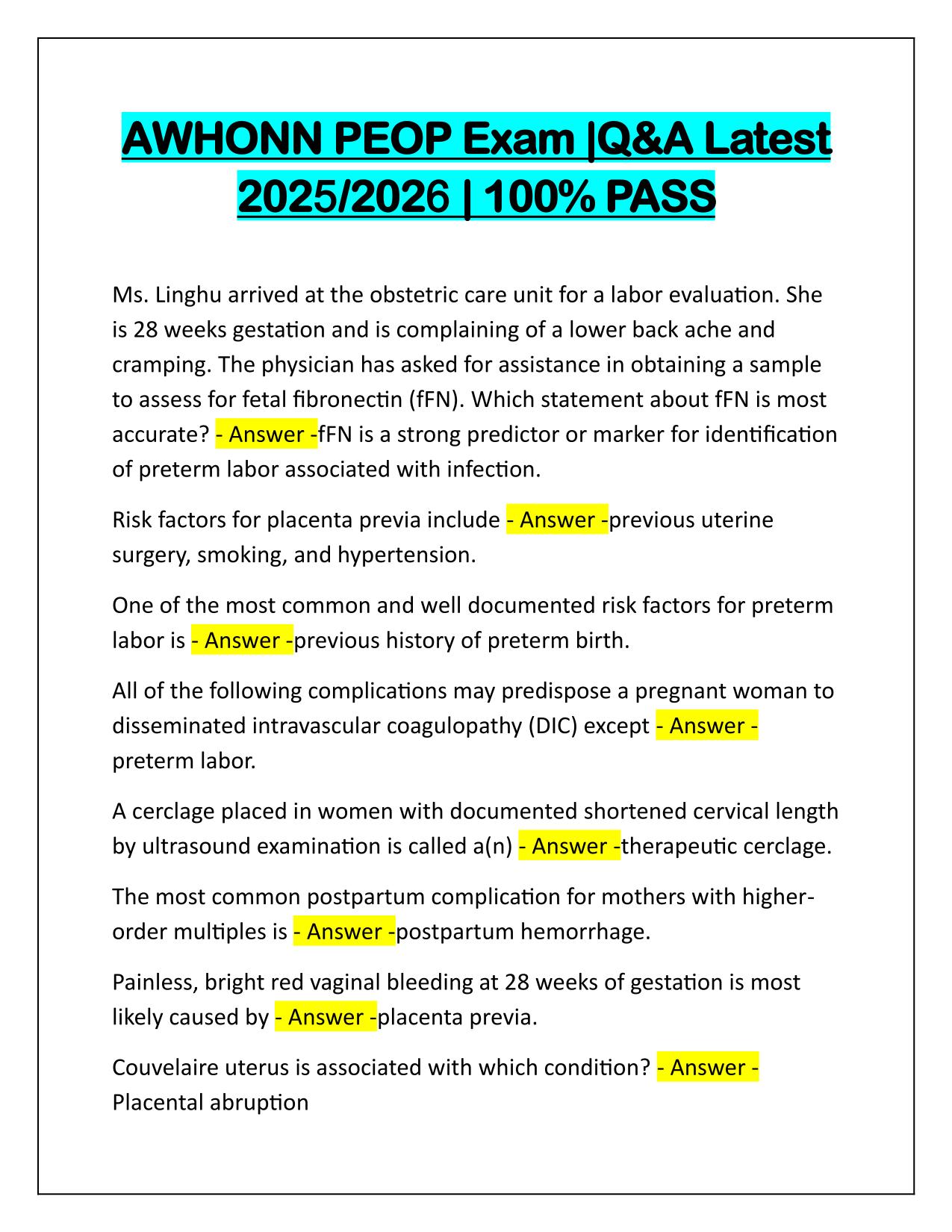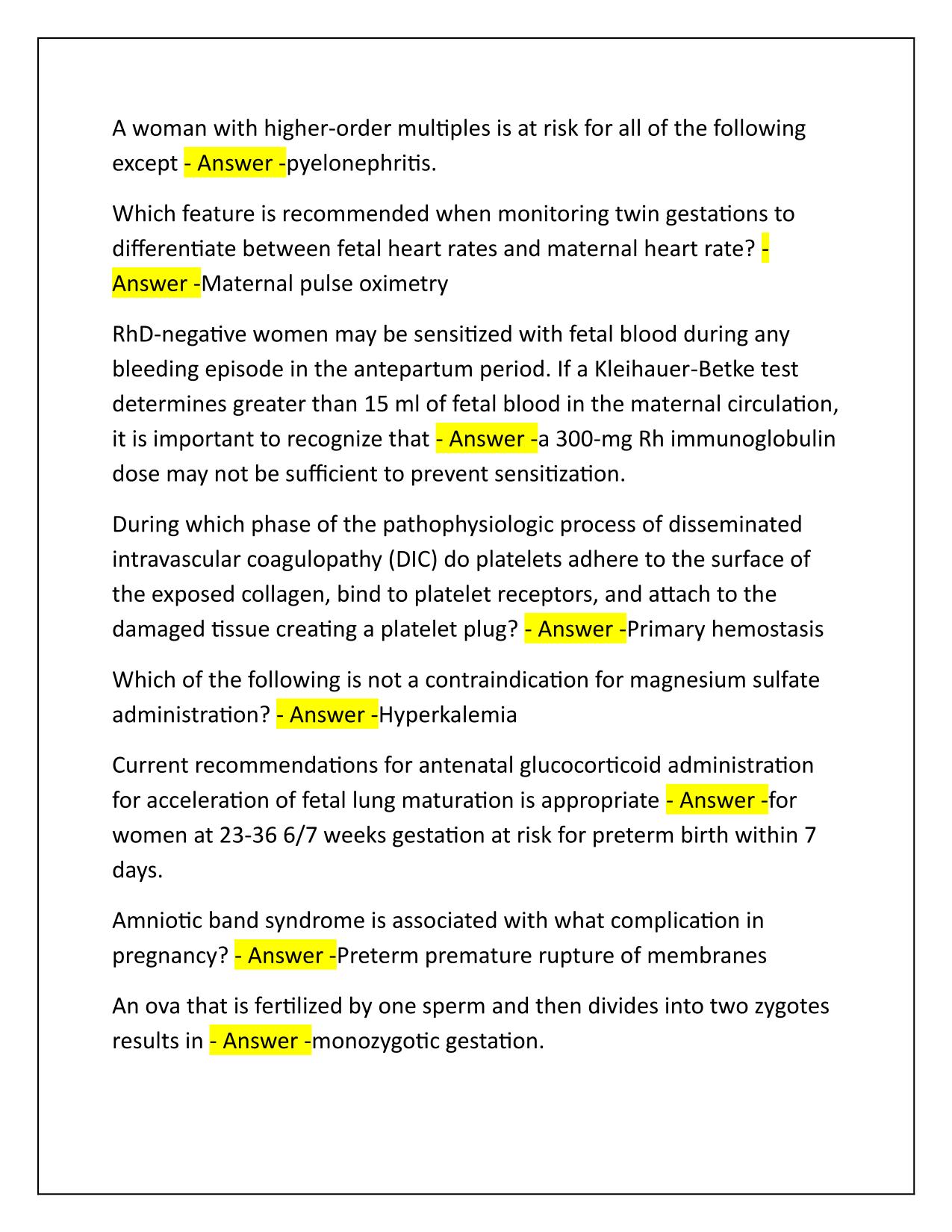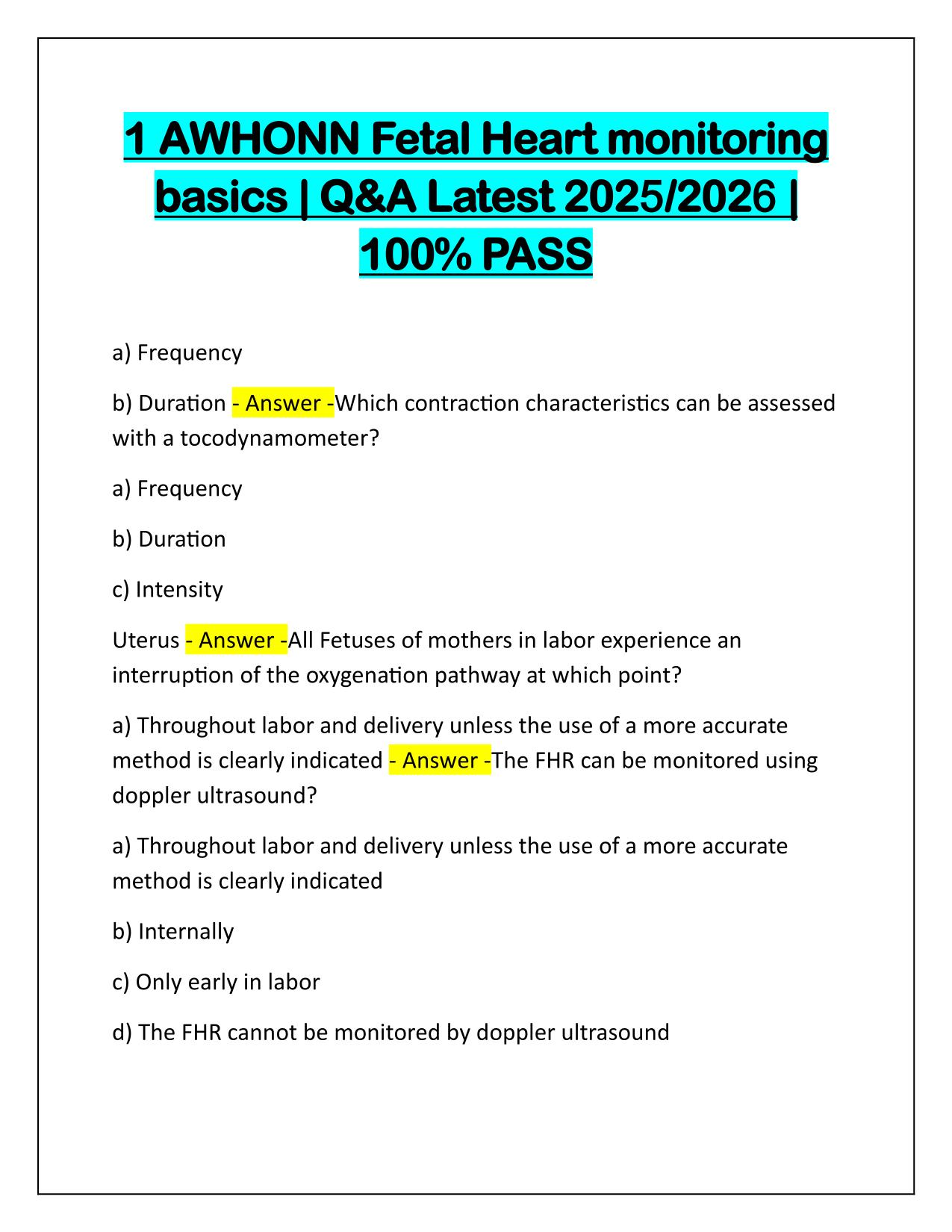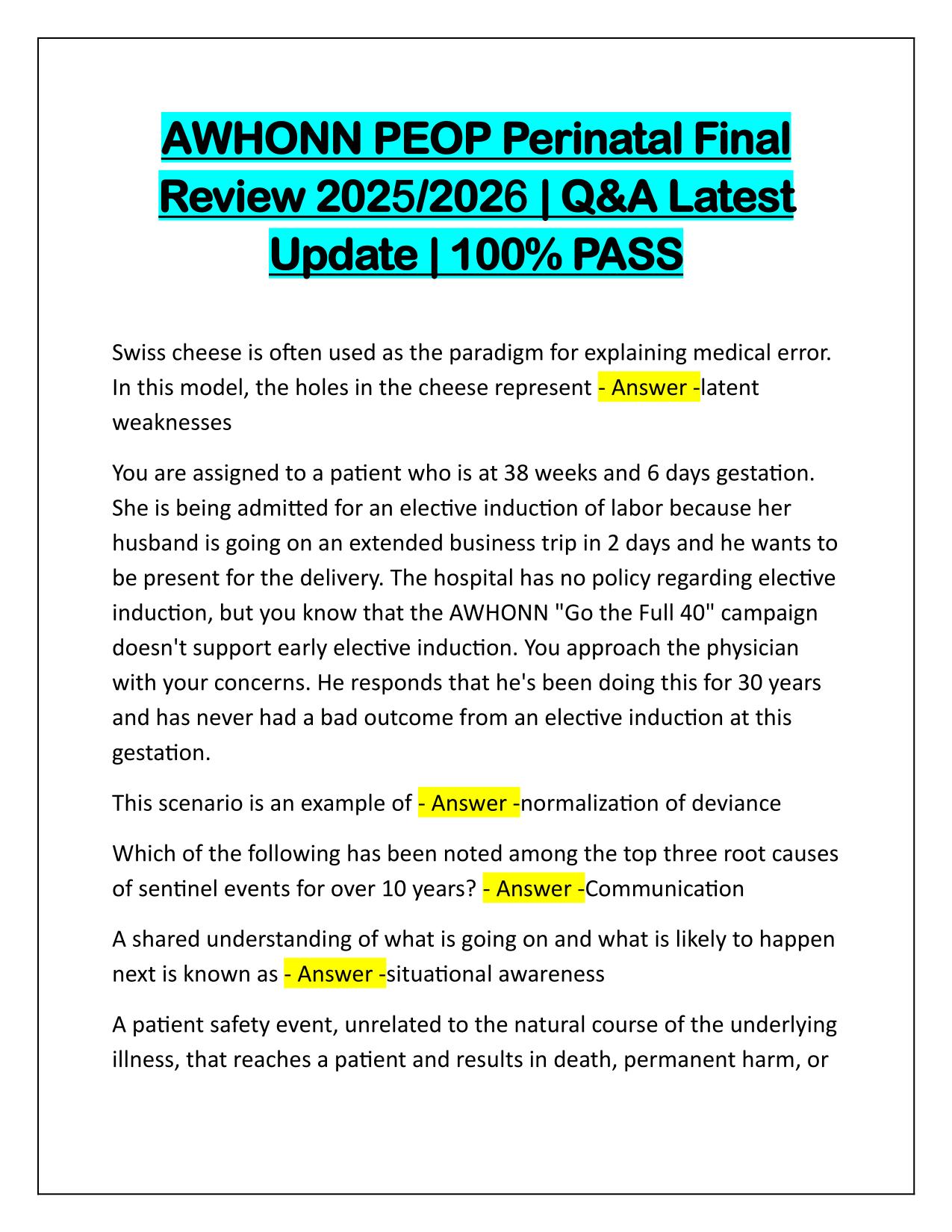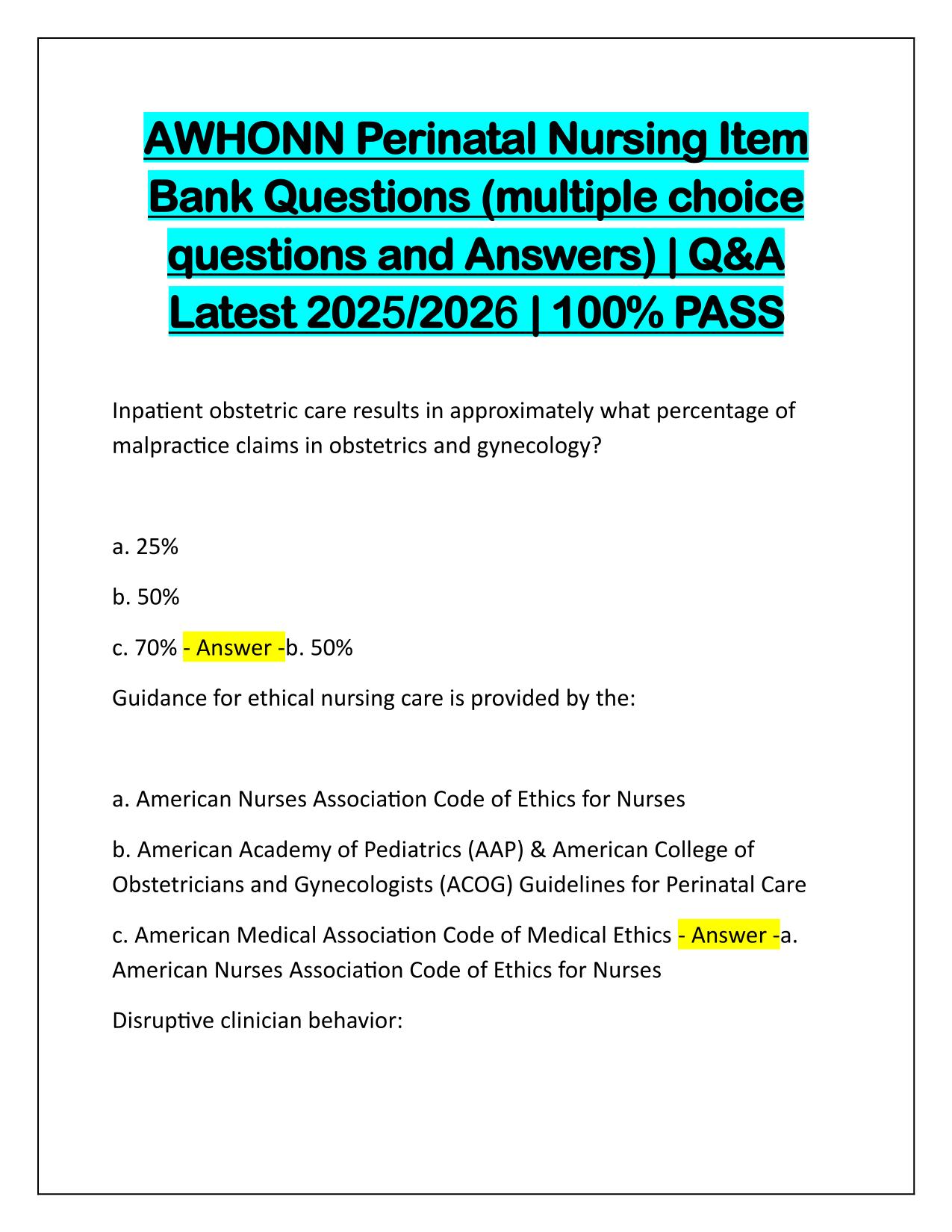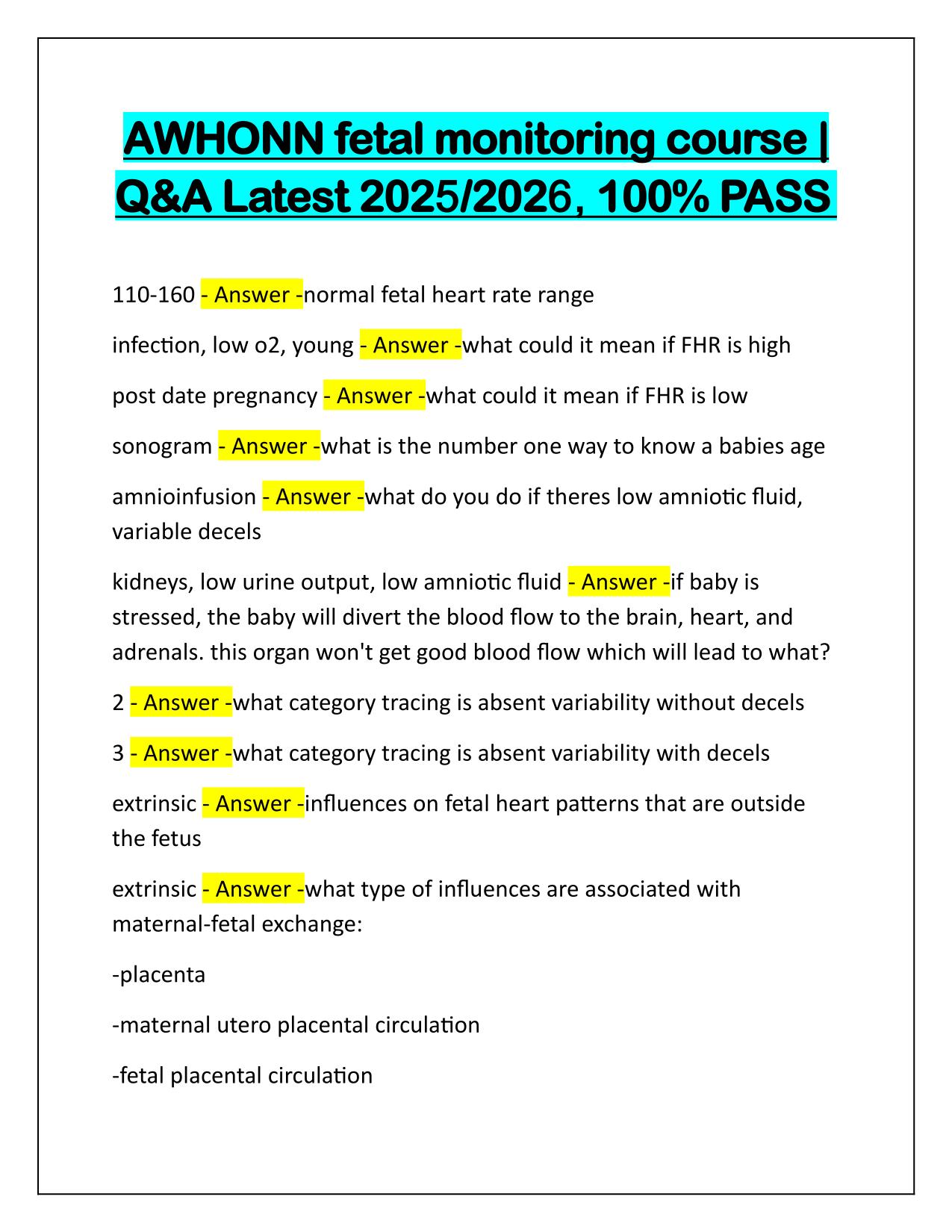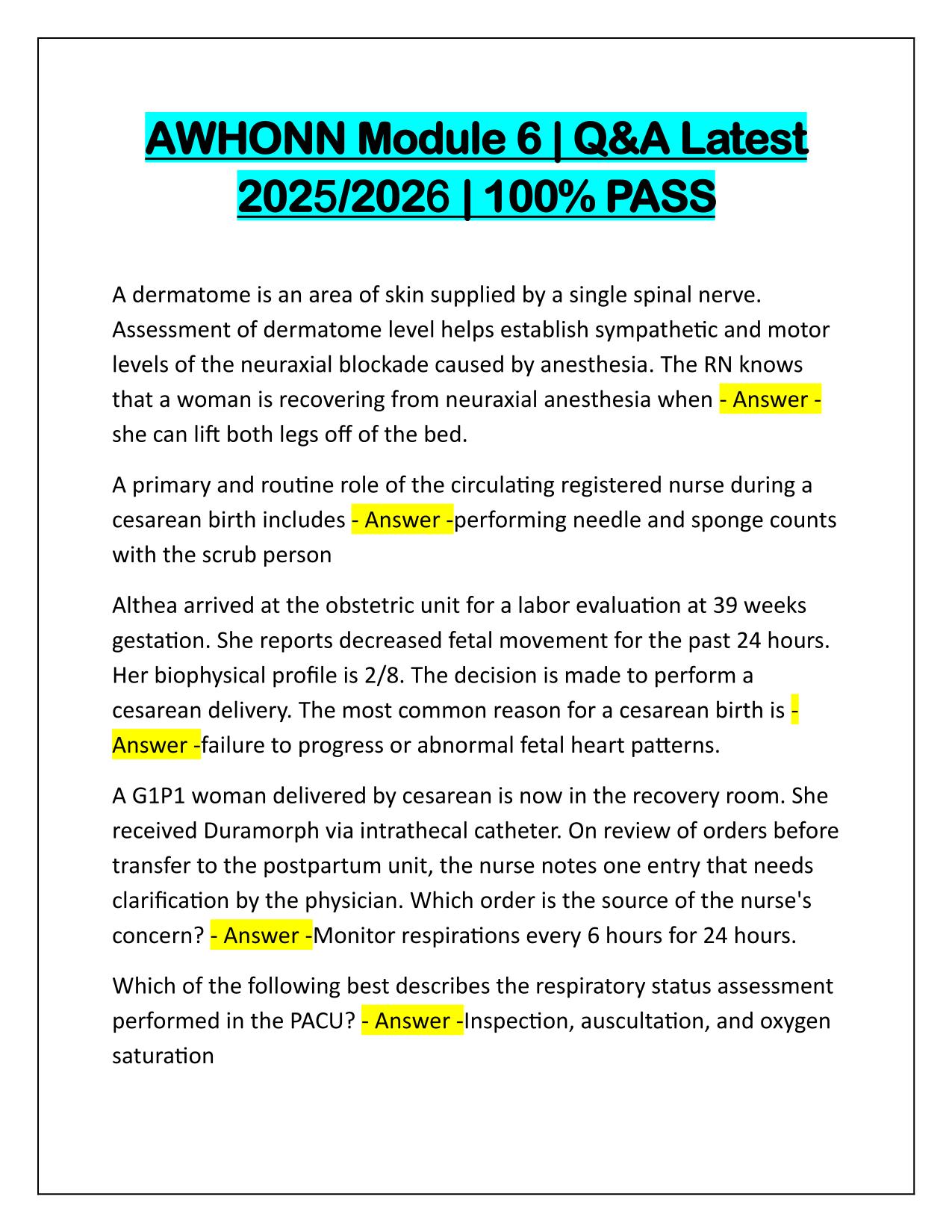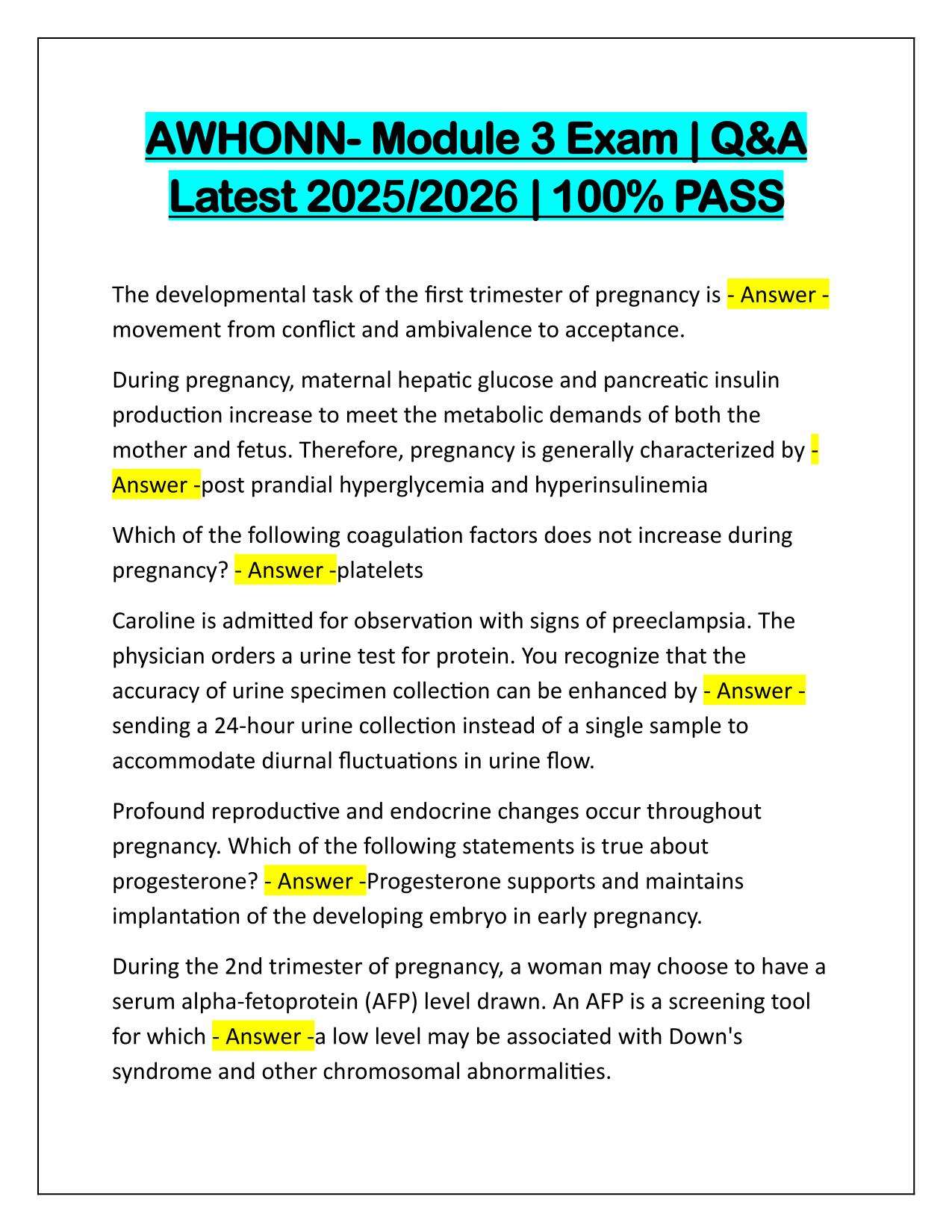AWHONN PEOP Exam Questions and Correct Answers 2025-2026 Update
Course:
AWHONN
Institution:
AWHONN
AWHONN PEOP Exam Questions and Correct Answers 2025-2026 Update
After purchase, you get:
✅ Instant PDF Download
✅ Verified answer explanations
✅ Refund if not Satisfied
✅ Prepared for 2025/2026 test cycle
Document Information
| Uploaded on: | April 30, 2025 |
| Last updated: | May 12, 2025 |
| Number of pages: | 44 |
| Written in: | 2025/2026 |
| Type: | Exam (elaborations) |
| Contains: | Questions & Answers |
| Tags: | AWHONN PEOP Exam Questions and Correct Answers 2025-2026 Update |
Seller Information

AdelineJean
User Reviews (0)
Exam (Elaborations)
$11.00
Bundle Deal! Get all 10 docs for just $23.50
Add to Cart
100% satisfaction guarantee
Refund Upon dissatisfaction
Immediately available after purchase
Available in Both online and PDF
$11.00
| 0 sold
Discover More resources
Available in a Bundle
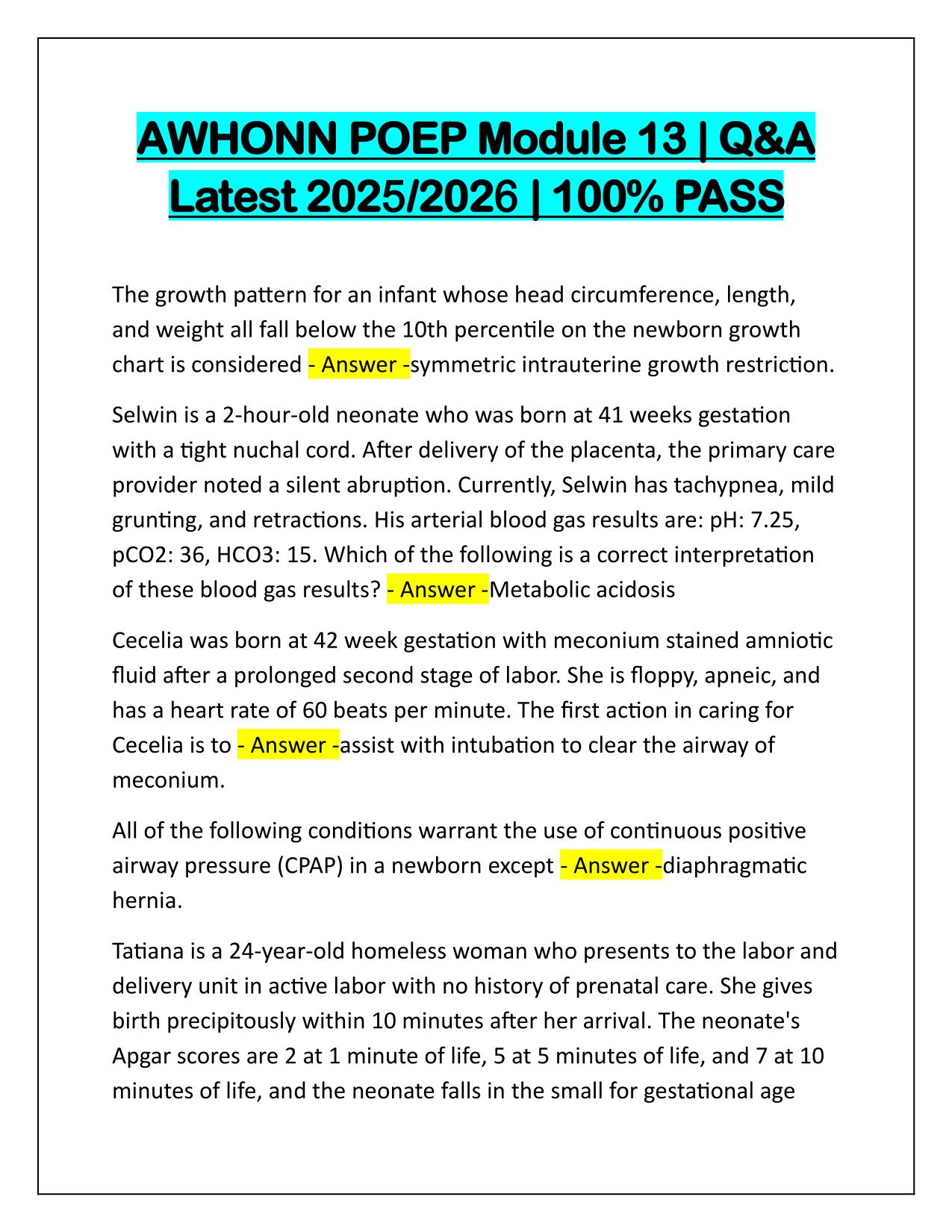
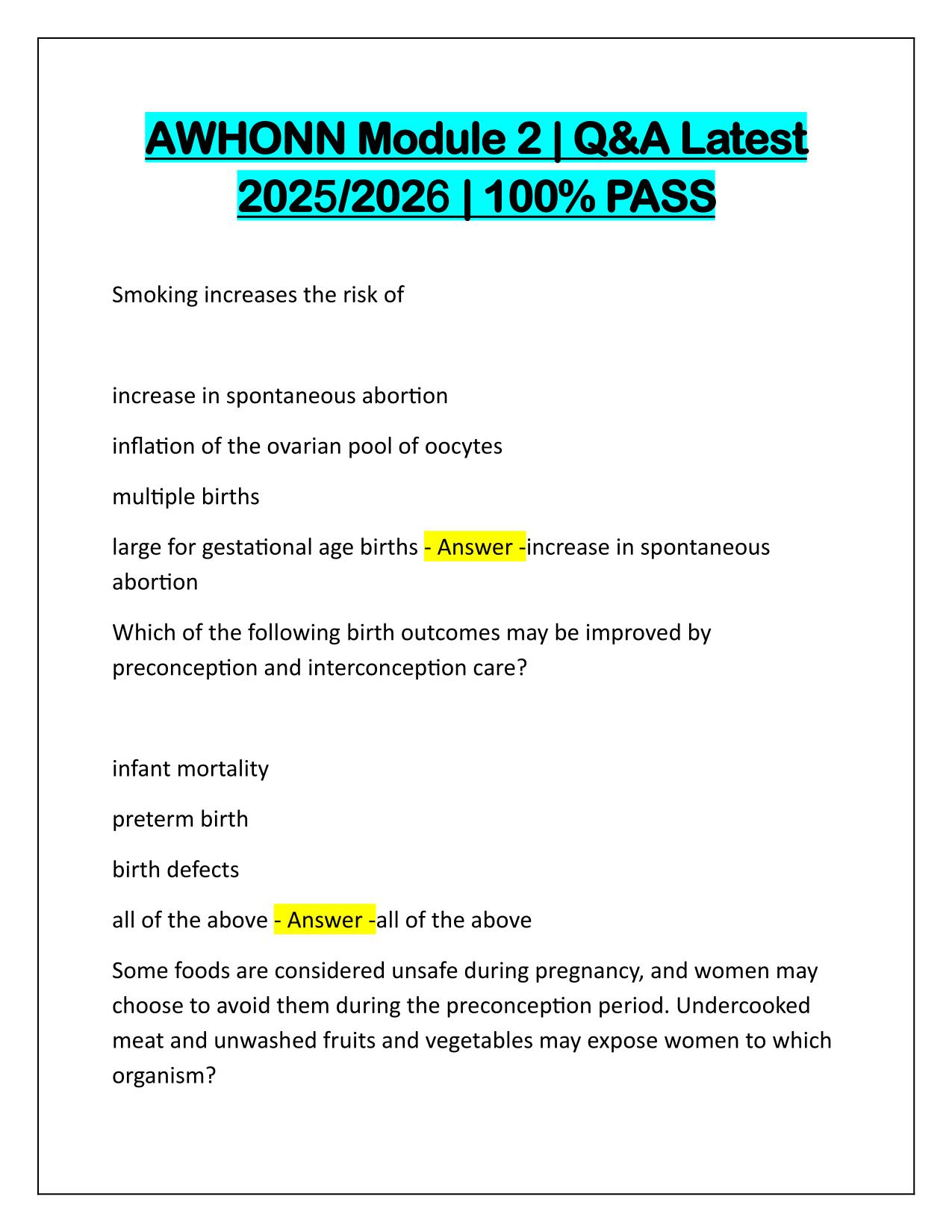
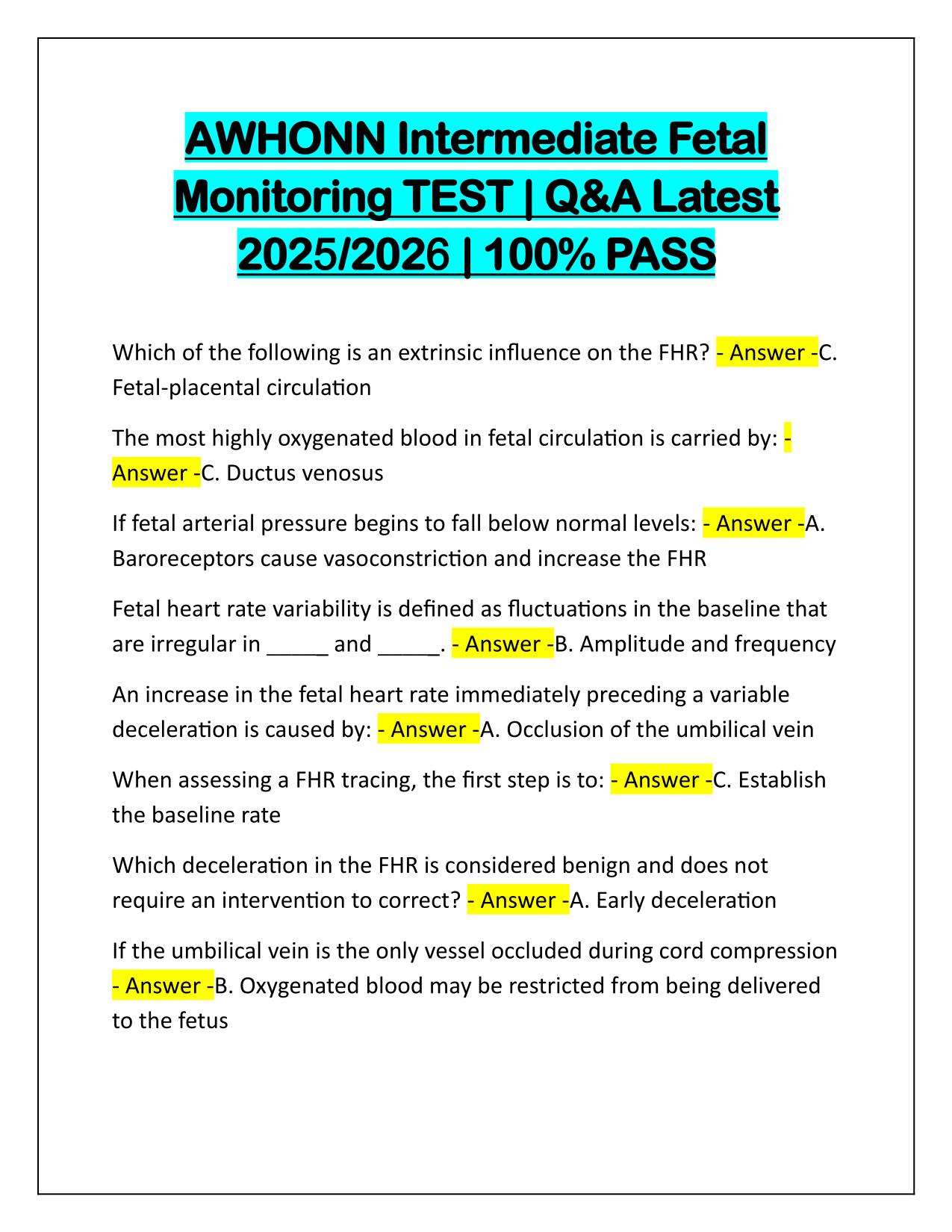
Bundle for AWHONN PEOP, Perinatal Nursing Q&A Latest Update 2025-2026 Update
Includes 10 Documents
$23.50
Content Preview
AWHONN PEOP Exam |Q&A Latest 2025/2026 | 100% PASS Ms. Linghu arrived at the obstetric care unit for a labor evaluation. She is 28 weeks gestation and is complaining of a lower back ache and cramping. The physician has asked for assistance in obtaining a sample to assess for fetal fibronectin (fFN). Which statement about fFN is most accurate? - Answer -fFN is a strong predictor or marker for identification of preterm labor associated with infection. Risk factors for placenta previa include - Answer -previous uterine surgery, smoking, and hypertension. One of the most common and well documented risk factors for preterm labor is - Answer -previous history of preterm birth. All of the following complications may predispose a pregnant woman to disseminated intravascular coagulopathy (DIC) except - Answer preterm labor. A cerclage placed in women with documented shortened cervical length by ultrasound examination is called a(n) - Answer -therapeutic cerclage. The most common postpartum complication for mothers with higherorder multiples is - Answer -postpartum hemorrhage. Painless, bright red vaginal bleeding at 28 weeks of gestation is most likely caused by - Answer -placenta previa. Couvelaire uterus is associated with which condition? - Answer Placental abruption
